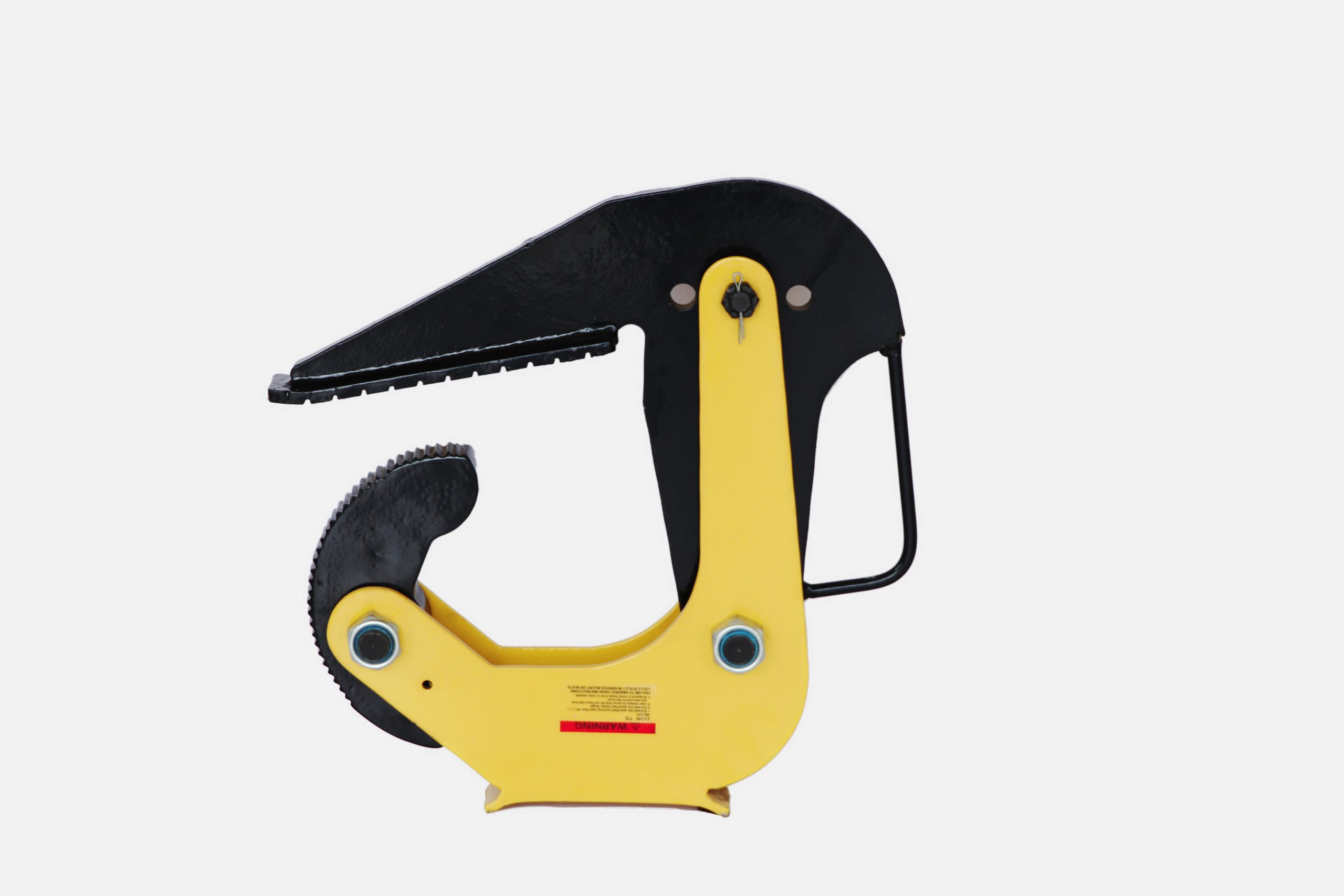TEL:+86 13179668188 E-MAIL:alina@volsn.com
In industrial lifting and handling operations, steel plate lifting clamps are indispensable tools widely used in steel processing, construction, logistics, and material handling. Proper usage not only enhances operational efficiency but also ensures the safety of both personnel and equipment. However, improper operation can lead to plate slippage, equipment damage, or even serious injuries. Therefore, understanding and following best operational practices is crucial.
1. Choosing the Right Steel Plate Lifting Clamp
Selecting the appropriate lifting clamp is the first step to ensuring safety. The choice should be based on the weight, thickness, material, and lifting method of the steel plate:
- For vertical lifting: Use vertical lifting clamps, preferably with an automatic locking mechanism to prevent the plate from slipping.
- For horizontal lifting: Horizontal lifting clamps should be used, typically in pairs or sets of four, to ensure even force distribution and prevent tilting or dropping.
- For special requirements:
- When lifting large or thick steel plates, opt for reinforced clamps for increased load capacity.
- If the steel plate surface is fragile or easily damaged, clamps with rubber padding can reduce clamping pressure and prevent surface damage.
- For varying plate thicknesses, adjustable-opening clamps ensure a perfect fit and secure grip.
2. Pre-Use Inspection and Maintenance
Before each use, conduct a thorough inspection to ensure the lifting clamp is in optimal working condition:
– Visual Inspection
- Ensure the clamping teeth are intact, with no excessive wear or cracks.
- Check whether the locking mechanism, spring, and bolts function properly to ensure secure locking.
- Examine the welded joints for cracks and confirm that no fasteners are loose or deformed.
–Mechanical Performance Check
- Verify that the clamp’s rated load capacity meets lifting requirements and that it is not overloaded.
- Apply lubrication regularly to ensure smooth operation and prevent rust or jamming.
- If the clamp has not been used for an extended period, perform a test lift to confirm its reliability.
–Regular Maintenance
- Conduct a full inspection monthly or quarterly, focusing on weld seams, clamping teeth, and fasteners.
- Immediately discontinue use if significant wear or structural damage is detected, replacing parts or retiring the clamp if necessary.
3. Proper Installation and Operation
(1) Ensure Proper Clamping
- The clamp must fully grip the steel plate, avoiding placement on the plate’s sharp edges or corners.
- Ensure the contact surface is clean, free of oil, rust, or debris, which may reduce grip strength.
- The center of gravity of the plate should be directly below the lifting point to prevent unbalanced loading.
- For horizontal lifting, ensure that multiple clamps are evenly distributed to prevent tilting or instability.
(2) Control the Lifting Process
- Lift and lower the plate smoothly to avoid sudden stops, rapid movements, or abrupt direction changes.
- Ensure that the plate does not collide with other objects during lifting to prevent accidental release or damage.
- Keep the plate steady while lifting to prevent swinging, which could compromise stability.
(3) Avoid Overloading
- Strictly adhere to the clamp’s rated load capacity, ensuring the steel plate’s weight is within the safe range.
- Never use a clamp to lift a plate beyond its maximum opening range, as insufficient clamping force could cause slippage.
4. Safety Precautions in the Work Area
The lifting work area should have clear safety warnings, and all personnel must follow safety guidelines:
🔹 Wear personal protective equipment, including helmets, gloves, and protective footwear.
🔹 Never stand under a suspended load to avoid the risk of falling objects.
🔹 Maintain clear communication among team members during multi-person operations, with a designated person directing the lifting process.
🔹 Ensure compatibility between lifting equipment and accessories, such as clamps, slings, and hooks, to meet load requirements.
5. Storage and Maintenance
Proper storage of lifting clamps after use helps maintain performance and prolong lifespan.
- Storage Environment: Keep in a dry, corrosion-free area to prevent rust and damage.
- Avoid Rough Handling: Store clamps hanging or on a designated tool rack to prevent impact damage.
- Regular Cleaning and Lubrication: Particularly after use in humid or dusty environments, clean the clamps promptly to prevent debris buildup and rust.
Proper usage of steel plate lifting clamps is essential for operational safety and efficiency. Any negligence in clamp selection, inspection, operation, safety measures, or storage could lead to serious risks. By strictly following best practices, businesses can minimize accidents, enhance workplace safety, and improve productivity.
For special lifting needs, it is recommended to choose customized lifting clamps from professional manufacturers to ensure optimal safety and efficiency across different working conditions.
